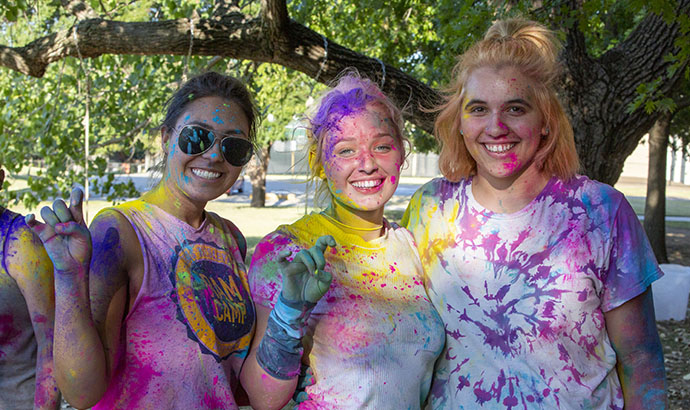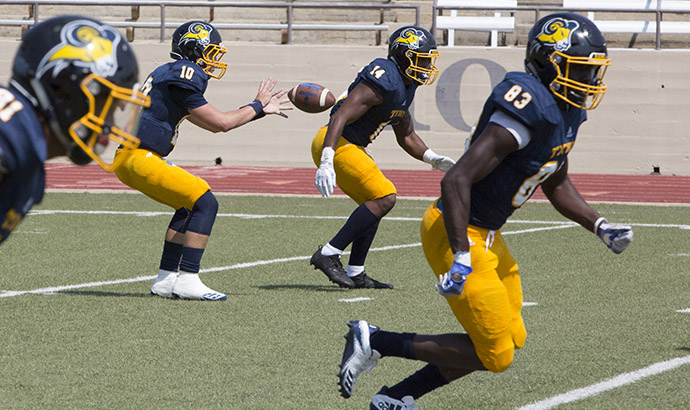Updated COVID Guidelines
Texas Wesleyan's on-campus guidelines are developed with the health and safety of the campus community in mind. The university will continue to monitor the latest recommendations from the CDC, making adjustments as needed.
If you were exposed to the virus that causes COVID-19 or have been told by a healthcare provider or public health authority that you were exposed, here are the steps that you should take, regardless of your vaccination status or if you have had a previous infection. Learn how COVID-19 spreads and the factors that make risk of spread higher or lower.
Start Precautions — Immediately
- Wear a mask as soon as you find out you were exposed
- Day 0 is the day of your last exposure to someone with COVID-19
- Day 1 is the first full day after your last exposure
Continue Precautions — 10 Full Days
- Take Precautions
- Wear a high-quality mask or respirator any time you are around others inside your home or indoors in public
- Do not go places where you are unable to wear a mask
- Take extra precautions if you will be around people who are more likely to get very sick from COVID-19
- Watch for symptoms
- Fever (100.4 degrees or greater)
- Cough
- Shortness of breath
- Other COVID-19 symptoms
- If you develop symptoms
- Isolate immediately
- Get tested
- Stay home until you know the result
Get Tested — Day 6
- Get tested at least 5 full days after your last exposure
- Test even if you don't develop symptoms
- If you test negative
- Continue taking precautions through day 10
- Wear a high-quality mask when around others at home and indoors in public
- If you test positive
- Isolate immediately
If you have COVID-19, you can spread the virus to others. There are precautions you can take to prevent spreading it to others: isolation, masking, and avoiding contact with people who are at high risk of getting very sick. Isolation is used to separate people with confirmed or suspected COVID-19 from those without COVID-19.
These recommendations do not change based on COVID-19 Community Levels. If you have COVID-19, also see additional information on treatments that may be available to you.
This information is intended for a general audience. Healthcare professionals should see Ending Isolation and Precautions for People with COVID-19. This CDC guidance is meant to supplement—not replace—any federal, state, local, territorial, or tribal health and safety laws, rules, and regulations.
When to isolate
Regardless of vaccination status, you should isolate from others when you have COVID-19. You should also isolate if you are sick and suspect that you have COVID-19 but do not yet have test results. If your results are positive, follow the full isolation recommendations below. If your results are negative, you can end your isolation.
Isolation
If you test positive for COVID-19, stay home for at least 5 days and isolate from others in your home. You are likely most infections during these first 5 days.
- Wear a high-quality mask if you must be around others at home and in public
- Do not go places where you are unable to wear a mask
- Do not travel
- Stay home and separate from others as much as possible
- Use a separate bathroom, if possible
- Take steps to improve ventilation at home, if possible
- Do not share personal household items, like cups, towels and utensils
- Monitor your symptoms. If you have an emergency warning sign (like trouble breathing), seek emergency medical care immediately
- Learn more about what to do if you have COVID-19
Ending Isolation
End isolation based on how serious your COVID-19 symptoms were. Loss of smell and taste may persist for weeks or months after recovery and need not delay the end of isolation.
- If you had no symptoms
- You may end isolation after day 5
- If you had symptoms and your symptoms are improving
- You may end isolation after day 5 if you are fever-free for 24 hours without the use of fever-reducing medication
- If you had symptoms and your symptoms are not improving
- Continue to isolate until you are fever-free for 24 hours without the use of fever-reducing medication
- Continue to isolate until your symptoms are improving
- If you had symptoms and had moderate illness (you experienced shortness of breath or had difficulty breathing)
- You need to isolate through day 10
- If you had symptoms and had severe illness (you were hospitalized) or have a weakened immune system
- You need to isolate though day 10
- Consult your doctor before ending isolation
- Ending isolation without a viral test may not be an option for you
Regardless of when you end isolation
Until at least day 11:
- Avoid being around people who are more likely to get very sick from COVID-19
- Remember to wear a high-quality mask when indoors around others at home and in public
- Do not go places where you are unable to wear a mask until you are able to discontinue masking (see below)
- For travel guidance, see the CDC's travel webpage
Removing your mask
If you have ended isolation, when you are feeling better (no fever without the use of fever-reducing medications and symptoms improving):
- Wear your mask through day 10
- If you have access to antigen tests, you should consider using them. With two sequential negative tests 48 hours apart, you may remove your mask sooner than day 10







